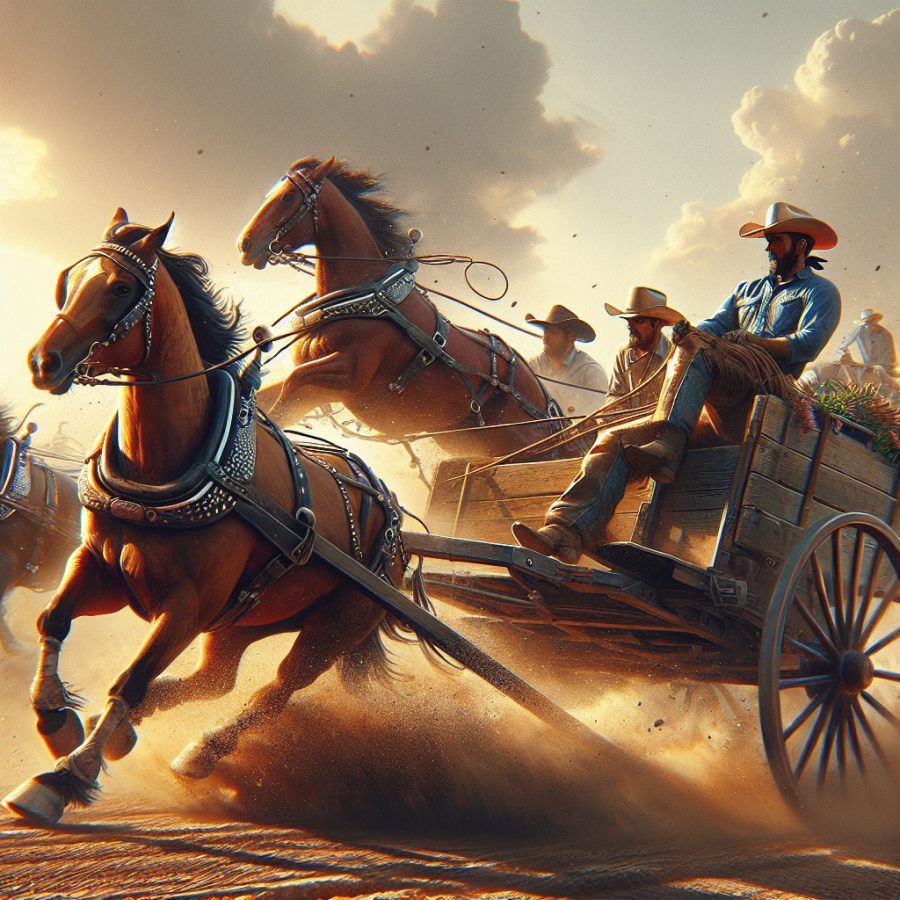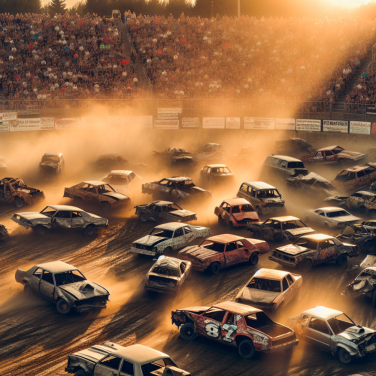The Fast-Paced Spectacle of Chuckwagon Racing: Origins and Evolution
Chuckwagon racing is a unique sport that owes its origins to the North American frontiers, where cowboys would compete informally with their chuckwagons—the mobile kitchens that followed them on long cattle drives—combining practical skills with entertainment. The inception of chuckwagon racing as an organized sport is credited to Guy Weadick, who, influenced by his roots in the Wild West shows, conceptualized the event as a main attraction for the first Calgary Stampede in 1923. Weadick's idea was to recreate the cowboy’s rush to pack their wagons and hit the trail, which led to the sport's foundation focused on speed, agility, and teamwork.
Initial races were simplistic affairs featuring wagons that cowboys used during their regular work, but as the sport evolved, a significant transformation occurred. Wagons were modified to become lighter and more agile, resulting in the specialized chuckwagons we see today, designed purely for racing. The structure of the races also developed, with precise rules and competitive formats that emphasized a fair and uniform ground for competition.
The sport's evolution went hand in hand with the breeding and training of horses tailored for chuckwagon racing. Quarter Horses, known for their explosive speeds over short distances, became the breed of choice for many teams. Just as the chuckwagons were adapted for their new purpose, equine athletes were bred and conditioned to perform at peak levels, making the races a high-octane spectacle.
Teams have become very professional in their approach as the stakes increased with the sport's popularity. Chuckwagon drivers, also known as "outriders," put in countless hours of training and strategy to perfect their craft. Each team comprises a driver, horses, and support crew, all playing crucial roles in their collective success. Coordination during the race is paramount, with the outriders responsible for loading tent poles and stoves into the wagons at the start and then unloading at the finish, analogous to the cowboy’s work of setting up and breaking down camp.
The scoring system in chuckwagon racing is complex, with penalties for infractions such as knocking over barrels or losing control of the team. This strict rule enforcement ensures the competition remains just as thrilling but safe for both humans and horses. The dedication to safety has increased over the years, with veterinary checks, race regulations, and equipment inspections now standard to protect the welfare of the animals.
Read also:
Smash and Crash: The Thrilling World of Demolition Derby
Keeping the Legacy Alive: The Intricacies and Modern-Day Challenges of Chuckwagon Competitions
Keeping the Legacy Alive: The Intricacies and Modern-Day Challenges of Chuckwagon Competitions
Chuckwagon racing, a sport deeply embedded in Western tradition, carries with it a history that dates back to the late 1800s and the early days of cattle drives. Often associated with the Calgary Stampede, where it has been a premier event since 1923, chuckwagon racing involves a team of horses pulling a chuckwagon, driven by a chuckwagon driver, and followed by outriders. Despite its rich heritage, chuckwagon racing faces a multitude of complexities and hurdles today that challenge its survival and continuity.
One of the primary intricacies involved in chuckwagon racing is maintaining the integrity and safety of the competition. With animals and humans working in close coordination at high speeds, the risk of accidents and injuries is significant. The welfare of horses, in particular, has become an increasingly prominent concern, leading to more stringent safety measures and regulations. The implementation of pre-race veterinary inspections, mandatory rest periods between races, and improved track conditions are among the steps taken to enhance safety. Still, the debate over animal welfare presents an ongoing challenge and can shape public perception of the sport.
Advancements in technology have also affected how chuckwagon races are conducted and enjoyed by audiences. While technology offers possibilities for improved safety measures, such as better protective gear for drivers and microchipping for horses, it also demands that organizers and participants adapt to new methods and tools, which can be both costly and time-consuming.
Another challenge facing chuckwagon racing is the struggle to attract new talent and maintain the interest of spectators. As urbanization continues and fewer people grow up with direct connections to the rural and ranching lifestyles that birthed chuckwagon racing, there is a tangible concern about the future generation's engagement with the sport. Organizers are compelled to find innovative ways to market chuckwagon races, often relying on social media and live-streaming services to reach wider and younger audiences.
The financial aspect of chuckwagon competitions can't be overlooked either. The high costs associated with maintaining a team, including horses, equipment, and travel expenses, place a significant burden on competitors, many of whom are not professional athletes and must find sponsors or other financial means to participate. This economic challenge can limit the entry of new competitors and even compel veteran racers to retire prematurely.
Environmental issues have also come to the forefront.




